Happy Fourth of July! Welcome to my blog! The week of 29 June – 5 July, I’m participating with more than two hundred other bloggers in the “Freedom to Read” giveaway hop, accessed by clicking on the logo at the left. All blogs listed in this hop offer book-related giveaways, and we’re all linked, so you can easily hop from one giveaway to another. But here on my blog, I’m posting a week of Relevant History essays, each one focused on some facet of the American War of Independence. To find out how to qualify for the giveaways on my blog, read through each day’s Relevant History post below and follow the directions. Then click on the Freedom Hop logo so you can move along to another blog. Enjoy!
Today for a few hours, my sons and I will be at the Joel Lane Museum House in historical clothing, talking with visitors about patriot Joel Lane and the Revolutionary War in North Carolina. If you’re in the Raleigh area, stop by and say hello. Musket drills and firings, games for the children, tours of the house, and plenty of cool lemonade.
Relevant History welcomes John Buchanan, author of the highly regarded The Road to Guilford Courthouse: The American Revolution in the Carolinas. For over two decades he was Chief Registrar of The Metropolitan Museum of Art, in charge of worldwide art movements. His other books are Jackson’s Way: Andrew Jackson and the People of the Western Waters; The Road to Valley Forge: How Washington Built the Army That Won the Revolution; and a novel of the Cold War, The Rise of Stefan Gregorovic. His short stories have appeared in Ellery Queen’s Mystery Magazine. For more information, check his web site.
*****
About a year ago, as he was preparing to retire as Secretary of Defense, Robert Gates said that in the future, any advisor to a President of the United States who recommended placing a large American land army on the Asian continent “…should have his head examined.” In the context of the American Revolution, the same might be said of British generals, backed by George III’s ministers, who cut themselves off from the lifeline of the British Navy and invaded the dangerous American backcountry. “Gentleman Johnny” Burgoyne lost his army at Saratoga in the wilds of northern New York State. And three years later our story begins with Lieutenant General Charles, Second Earl Cornwallis, deep in the Carolina backcountry, chasing ghosts.
In October 1780, Cornwallis was poised in Charlotte, North Carolina, to drive northward, reclaim the state for the crown, destroy the remnants of the Continental army he had scattered at the Battle of Camden, and then perhaps push on into Virginia. But on 7 October, 1100 Tory militiamen under the British officer Major Patrick Ferguson, who were protecting Cornwallis’s left wing, were wiped out at King’s Mountain, South Carolina by backcountry militia and Overmountain Men from beyond the Appalachians. His left wing in the air, believing incorrectly that he was in danger from thousands of rebels descending on him from the west, Cornwallis retreated to winter quarters in South Carolina.
Once again the British attempt to re-conquer the Carolinas had run up against a fierce guerrilla campaign that had begun in the backcountry in the summer of 1780. The irony of the Revolution in South Carolina is that it was started by the Low Country Rice Kings and saved by the backcountry militia, whom the Rice Kings scorned as a “pack of beggars.” Yet it was those men, horsemen all, who waged a sweeping war of movement, maintained their allegiance to the Cause despite two disasters to Continental armies, demoralized the Tory militia, and held their own against British and provincial regulars in classic guerrilla style in actions large and small, some lost to memory in the mists of time.
But they could not win the war in the South by themselves. Their great contribution was to the gain the time necessary for there to appear on the scene two Continental generals who had much to teach Lord Cornwallis and his subordinates about the art of war: Major General Nathanael Greene and his deputy, Brigadier General Daniel Morgan.
Fearful that Morgan’s detached force of regular light troops, the cream of Greene’s army, was threatening one of his major backcountry posts, Cornwallis sent his celebrated cavalry commander, Lieutenant Colonel Banastre Tarleton, to deal with the threat. Morgan and Tarleton met in battle on 17 January 1781 on the field of Cowpens, South Carolina. In the tactical masterpiece of the war, Morgan combined regulars and militia and destroyed most of Tarleton’s light troops, the eyes and ears of Cornwallis’s army.
In a rage over his loss, Cornwallis burned his cumbersome baggage train and set off in pursuit of Morgan, and then Greene after the two American forces merged. At Guilford Courthouse, North Carolina, Greene and Cornwallis fought a battle described by Greene as “long, obstinate, and bloody.” By eighteenth-century standards, Cornwallis won, for at the end he occupied the field while Greene withdrew. But in winning, His Lordship had ruined his army. His losses heavy, deep in the backcountry swarming with foes, Cornwallis was forced to withdraw to Wilmington, North Carolina, on the coast. There he wrote to a fellow general, “I assure you that I am quite tired of marching about the country in quest of adventures.” His plan now was to “bring our whole force into Virginia” where “a successful battle may give us America.”
While Nathanael Greene artfully combined the respective talents of regulars and militia and proceeded to liberate South Carolina and Georgia, Lord Cornwallis pursued his delusion of a “successful battle” to win America. He turned his worn and decimated army northward, where he found more adventures and fulfilled his American destiny: in a village in Virginia called Yorktown.
*****
A big thanks to John Buchanan. He’ll give away an autographed copy of The Road to Guilford Courthouse in trade paperback format to someone who contributes a legitimate comment on my blog today or tomorrow. Delivery is available worldwide. Make sure you include your email address. I’ll choose one winner from among those who comment on this post by Thursday 5 July at 6 p.m. ET, then publish the name of all drawing winners on my blog the week of 9 July. And remember that anyone who comments on this post by the 5 July deadline will also be entered in the drawing to win one of two autographed copies of my book, Regulated for Murder: A Michael Stoddard American Revolution Thriller.
**********
Did you like what you read? Learn about downloads, discounts, and special offers from Relevant History authors and Suzanne Adair. Subscribe to Suzanne’s free newsletter.


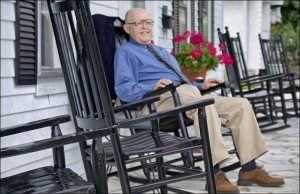
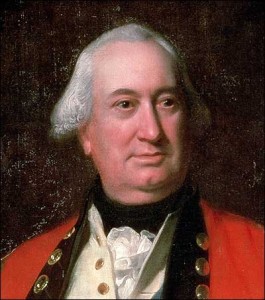
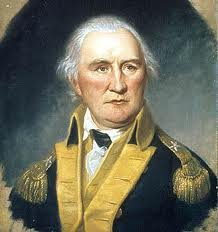
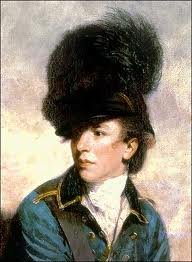
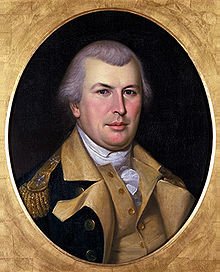
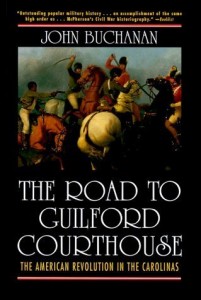
I am so proud to be an American, and I love our history. I am constantly amazed at the new things I learn as I study. Thanks!
There’s a local reenactment of the mustering of the Overmountain Men held annually. They start at Abingdon, VA with Col. Campbell’s Virginia Militia and they end up at Sycamore Shoals State Park where there are lectures and demonstrations. It’s well done. Here’s an article from last year’s gathering: http://www.johnsoncitypress.com/News/article.php?id=94517
Thanks for a very interesting and seasonally appropriate post! It was so nice to have this to read today. Happy Independence Day!
Thanks for stopping by, Ruth. Enjoy your 4th!
Jeanne, thanks for posting this information. I thought the Overmountain Men reenactment was done annually, but I hadn’t had time to go back and look. Pat Ferguson sure annoyed with the wrong group, didn’t he? Have a great 4th!
John, thanks so much for your stirring essay for our Fourth of July!
In recent years, a number of historians and scholars have produced analyses of historical events that essentially cut Banastre Tarleton a good bit of slack, such as what Jim Piecuch did in his analysis of the infamous “Waxhaws Massacre.” What’s your take on this trend?
As crucial as the southern campaign of 1780-81 was to deciding the outcome of the war, I’m surprised that American schools place so little emphasis on it when teaching about the Revolution. When I went through school during the 60s and 70s,the schools concentrated on the northern battles, with perhaps a throwaway comment about Yorktown, but not covering the crucial battles that led up to it.
At Cowpens, I see maturity and experience winning the day over youthful bravado. There’s no question that Tarleton was a brilliant cavalryman, but Morgan knew his enemy and how to exploit his weaknesses — he played Tarleton like a violin. Morgan also had the advantage of picking the time and place the battle would occur.
Still, things could have been rather different had Tarleton not driven his men through bad weather with little rest and insufficient food.
I can only wonder how the rest of the war would have gone if the victory at Cowpens had gone the other way.
I never get tired of reading about the Revolution in the south. Great post! Please enter me: JDQ1175@aol.com
Tracy, thanks for your comment. My older son and I were discussing this point the other day: specifically how the outcome of the Morgan/Tarleton confrontation might have swung the other way had Tarleton’s army caught Morgan’s army at breakfast the day before the actual battle, soon after Tarleton and his men crossed the Pacolet River. Had Morgan been over-confident and not posted a rear guard to run ahead and warn that Tarleton had tricked them with a middle-of-the-night counter-march, Morgan’s army would have been fighting the Legion and its allies over their breakfast campsite. Morgan, caught by surprise, would not have been able to pick his ground or deploy his militia. I doubt Morgan would have triumphed under those circumstances. And that would have changed the cards in Cornwallis’s hand.
Jenny, I’m glad to see you checking in!
I have such pride in being an American. I love reading about the History of our Country. Especially the Revolution down south.Thank you so much for the post. I hope to see a reenactment some day.
Carol L
Lucky4750 (at) aol (dot) com
George Washington was not a good tactical general. He was a wonderful leader of men and he refused to stop fighting. But generals under his command were better at planning and executing a battle.
I’m so proud to be a direct descendant of Scotch-Irish pioneers, South Carolina militia families who gave the word “patriot” special meaning. My folks signed the Williams petition, and were at Cowpens and King’s Mountain.
I grew up in Illinois, and my public school education in history there was taught though North-tinted glasses. (My elementary school, coincidentally, was the Lincoln School). I didn’t learn the true stories of the South in the American Revolution and the Civil War until well into adulthood, while doing genealogy research. Such amazing and interesting history!
And that love of history was only made possible by the authors and historians who share their work with us. Thank you John and Suzanne for making this information, these stories of our collective history, available and accessible to all. Happy 4th of July!
Thanks to all who commented and especially for your enthusiasm for American history. I recall that when I was a lad in the 30’s and 40’s the Southern Campaign was taught. Sadly, not only this campaign but history in general has over the ensuing years been given short shrift. Suzanne, I am aware of the revisionist view of Tarleton, and as the late and lamented Don Higginbotham once told me, that’s the name of the game. But revisionists are often in need of revision, and I don’t buy the latest view of Tarleton. The evidence in my opinion points to grave defects of character and failure to control his men. I stand by the evidence presented in my book. Thanks again folks for adding to our Glorious Fourth.
Best Wishes, Jack Buchanan
Hi folks, Murphy’s Law says that when I step out, something goes wrong. Typepad is messing up the links to this post + John Buchanan’s browser seems to be incompatible with Typepad.
I’ve emailed him your comments and hope to post responses late tonight or early tomorrow. Please check back.
Happy Independence Day!I’m grateful I don’t have to shoot a musket today, Suzanne! We saw the Overmountain Men reenactors on the Victory Trail in Dysartsville, NC, last fall. They breathed life into old stories. Thanks to those who keep these stories alive.
georgiaruthwilson@gmail.com
Hi Folks, Jack here again and again thanks you for your comments. As you can see from this and my previous comment my browser seems to be OK. It was ME, a technological ignoramus who took a while to figure out how to proceed. I can write books and stories on my computer and send them online to publishers and magazines, but when required to do something different I run into trouble. Sorry about that. Anyway, further to Tarleton. He was a fine cavalry commander when in hot pursuit. But when he ran into an enemy ready and waiting he was repulsed with heavy casualties in one action and crushed and routed at Cowpens. The first action was at Blackstock’s in South Carolina against Thomas Sumter, who deployed his militia in a strong defensive position and repulsed Tarleton’s frontal attack with heavy losses. Tarleton behaved with great personal heroism in this battle, but he lied to Cornwallis when he reported a victory and lied in his postwar memoirs. I describe this important action on pp. 251-59 in The Road to Guilford Courthouse.
Thanks again to all who responded,
Jack Buchanan
I’m watching the Military Channel’s emphasis on the Revolutionary War today and they mentioned that many in the Southern colonies were extremely “fluid” in the side they would support (practicality winning over politics and ideology perhaps?).
I’m intrigued by Greene and Morgan; however, I’d like to hear both of you talk about the “Swamp Fox” Francis Marion, and how he caused no end of grief to Tarleton.
I’m so grateful to all the authors of both (well-researched) historical fiction and non-fiction works, and especially to those of you who blog and participate in living history events.
Carol L, thanks for stopping by and commenting this week!
Warren Bull, I also think Washington knew how and when to delegate, which is something that too many leaders through time never figured out. General Nathanael Greene, by the way, wore down the British in the South by losing just about every battle in which he led his men. While he was technically the “loser” at the Battle of Guilford Courthouse, he caused Cornwallis to lose 25% of his dwindling army to injury or death. Greene could replenish his army from among the Americans, but Cornwallis was unable to get more redcoats easily. So it was a war of attrition that Greene fought. An amazing tactic.
Lisa Bowes, you certainly aren’t alone in being taught the Revolutionary War through “Northern-tinted glasses.” One goal of this annual week-long program is to generate awareness of this polarity, perhaps eventually change how high school history classes structure the presentation of this material. And kudos to you for learning the big picture on your own!
Georgia, my older son not only shot a musket yesterday at our presentation at the Joel Lane Museum House in Raleigh, NC, but he did so in 95-degree heat while wearing the wool uniform of a private in the 33rd Light Company of Foot.
Such living history displays really help spectators understand facets of the past. I’m glad you had the opportunity to see the Overmountain Men.
Jack, thanks again for such a terrific post — and for being such a great sport with the technology. I think Tarleton was really good at his trick of swift, stunning strikes. Much of the time, that tactic worked, and it became his main game plan. Things might have turned out differently for Daniel Morgan’s army had Tarleton caught up with them while they were having breakfast near the Pacolet River. Instead, Tarleton’s youthful lack of “Plan B” for his engagements stands out — especially at the Cowpens, where Morgan plotted and executed a multi-layered defensive strategy. Did Morgan study Tarleton’s history? You bet.
Hi Linda, that “fluid” nature of allegiance in the South was caused in part by the civil war flavor that the war took on that theater. You didn’t have to have a redcoat or a bluecoat in sight for men to start fighting. In reality, Tarleton realized quickly that Marion knew the swamps like the back of his hand, and “only the devil could catch that old fox,” so he quit chasing Marion. But the failure to catch Marion obviously irritated Tarleton to no end for a long while. As his parting shot to Marion, he went through the Santee and torched a number of homesteads. (I cover that piece of history in my third book, Camp Follower.)
In reality, Tarleton realized quickly that Marion knew the swamps like the back of his hand, and “only the devil could catch that old fox,” so he quit chasing Marion. But the failure to catch Marion obviously irritated Tarleton to no end for a long while. As his parting shot to Marion, he went through the Santee and torched a number of homesteads. (I cover that piece of history in my third book, Camp Follower.)
Another factor was that the war had been going on for years by the time it finally focused on the South. Everybody was tired and out of resources. There seemed no end in sight for the war. I read one story of a militiaman who got captured by the Crown in a battle, was forced to fight with them for awhile, was recaptured by his own side, fought with them, then got recaptured by the Crown. Maybe that looks “fluid” to us, but I think the poor fellow was just trying to stay alive. And that’s what it came down to in the South. If somebody pressed at pistol to your head and demanded that you fight with them, you complied.
Ahhh, Francis Marion. He and Tarleton played tag in the Santee for only about a day, but Disney turned the incident into a series and made it look like Tarleton was chasing him for months.
Hi Linda,
Suzanne has pretty much covered the waterfront re “fluid” loyalties and Frances Marion, but let me add a few comments.
Marion was one of history’s great guerilla leaders. He understood perfectly the nature of guerilla warfare. When one of his subordinates suggested building a fortification he said the Brits understood better that type of war and he and his men tried it they would end up on British hands. Much of his success, and that of other Rebel band, was due to his mobility on horseback, and Marion always saw to it that his men well mounted.
As to the “fluid” nature of the conflict — true in part of the North too — Suzanne’s mention of it also being a civil war played a major role in how people reacted, especially as people were all mixed up in their communities, and families split as well. This fluidity is highlighted for me by one Solomon Beason, “half Whig, half Tory, as the occasion required.”
By the way, I answered a few moments ago with another comment but I’m not sure it went through so I wrote this shorter version.
Jack Buchanan
Jack Buchanan
Jack, I’m glad you re-posted, because your other comment didn’t come through.
Excellent point about Marion’s guerilla tactics! The Crown forces came from a background of formal field battles. The wisdom of hiding behind trees and picking off your enemy little by little didn’t make sense to them until right at the end of the war, when it was too late.
Love the quote from Solomon Beason!
Hi All, Jack here again, with a comment on Cornwallis post America, when he was governor general and commander in chief in India, where he was successful in both roles, adding to the British Empire. But he never again burned his baggage train, paying close attention to logistics, didn’t neglect administration, which he did in America, and never again met a general of Nathanael Greene’s talents. By the way, I’m sure all of you have heard India described as the “jewel in the crown,” but I maintain that when England lost America she lost the real jewel in the crown.
And Warren, re Washington, in the Epilogue (pp. 313-21) of my book, The Road to Valley Forge: How Washington Built the Army That Won the Revolution, I give a summing up of my judgments on Washington as strategist, tactician, and politician, the latter a key component to his military success. I also comment on his various operations, i.e., bringing men to the battlefield or withdrawing them.
Jack Buchanan
Thanks for making history come alive! Great post.
boots9k at wowway dot com
I had to giggle a little bit about Gate’s comment, he clearly wasn’t much of a Princess Bride fan or else he’d have quoted “never get involved in a land war in Asia”!
Anyway, I loved reading that the Appalachian peoples seemed to be very instrumental in fighting the Revolutionary War because my roots are very strong in the area. And I liked the visual of Cornwallis burning his luggage in the midst of a holy temper tantrum!
Hi Mel, thanks for commenting. As Jack points out, Cornwallis did a much better job in India than he did in America. However his position in India was more senior than it was in India. I suspect that he did the best he could in America, considering that he was sometimes at odds with his superior officers. (You know how bosses can stymie their employees?)
Interestingly, despite the fact that Cornwallis had to surrender at Yorktown, Americans seem to have a more favorable view of him than most other high-ranked British officers during the Revolutionary War. He sure has a lot of places in central North Carolina named after him. Gee, could it be that Americans respect Cornwallis?
You have to wonder, though, how things might have been different if the Duke of Wellington had been a generation older and had fought in the Revolution, rather than in India and the Napoleonic Wars.
As a bit of throwaway trivia, I once read that Tarleton, by then promoted to general, had hoped to get the command given to Wellington in the Peninsular War. The what-ifs there are fascinating as well. However, his reputation had suffered greatly after trashing Cornwallis in his memoirs and he was never in serious contention for the role — just wishful thinking on his part. By that time, he was considered to be pretty much of a has-been.
Tracy, what an interesting scenario, the Duke of Wellington in the American Revolution. Have you seen Francisco de Goya’s painting of the “Iron Duke?” (You can see the image at http://www.bbc.co.uk/programmes/p00glwvt) I think it’s creepy. His face is stamped with PTSD, strain, and battle horror. I’m kinda glad we have that testament, though. Most of those military paintings were done well after the commanders returned home and had been off the battlefield, like the Reynolds portrait of Tarleton. All we see of them is the glory, not the horror.
Hi Tracy,
Yes, Tarleton shot his bolt when he trashed Cornwallis. He had also hoped to go to India with Cornwallis as his cavalry commander, but that went down the tubes too. As an MP he often criticized Wellington, then Arthur Wellesley, in Parliament, and once was ridiculed when he said in a parliamentary debate that he hoped someday to sit down with Napoleon and discuss military matters. After America, he never again commanded troops in battle.
Your point on Wellington had he served in America is well taken. We can be thankful he didn’t.
And I think no discussion of the Revolution can be complete without admitting that without French arms, money, an expeditionary force, and a fleet in the right place at the right time we could not have won the war. Of course, the French did it for revenge against the British for the loss of Canada. Nevertheless, France was as important to the USA in the 18th century as we were to France in the 20th century.
Thanks again to all for your trenchant comments, and God Bless America.
Jack Buchanan
Jack and Tracy, you’ve brought up an excellent “Relevant History” lesson:
Don’t trash your colleagues publicly.
You lose credibility when you do, and it may make people more sympathetic toward the person you’re badmouthing.
It’s amazing how many actors and politicians haven’t learned that lesson.